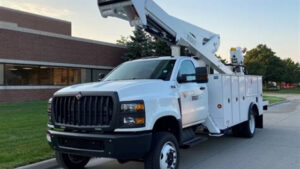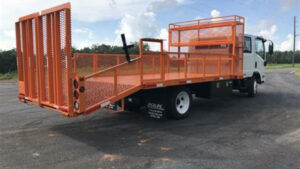Food trucks have become a popular way for chefs to bring their delicious dishes to the streets. Designing your own food truck template can help you stand out among the competition and attract more customers. While it may seem intimidating to create your own template, it can actually be a fun and rewarding process. With a few tips and tricks, you can have an eye-catching food truck that reflects your brand and personality. In this article, we will guide you through the process of designing your own food truck template in relaxed English language.
1. Things You Need to Consider When Designing a Food Truck Template
Designing your own food truck template may sound fun and exciting, but it requires careful planning and consideration. Here are some factors you need to take into account:
1.1 Type of Cuisine
The type of cuisine you serve will determine the overall look and feel of your food truck. For example, a taco truck may have a vibrant and colorful design, while a gourmet burger truck may have a sleek and modern aesthetic.
1.2 Target Audience
Consider the demographics of your target audience such as age, gender, and cultural background. This will help you determine the kind of design that will appeal to them.
1.3 Branding and Logo
Your food truck design should reflect your branding and logo. Make sure to incorporate your logo and brand colors into the design.
1.4 Menu Items and Prices
Your menu items and prices should be easily readable and visible from afar. Use large fonts and clear graphics to help customers navigate your menu.
1.5 Space and Layout
Consider the space and layout of your food truck. You don’t want your design to clutter the space or distract from your menu items.
1.6 Health and Safety Regulations
Make sure that your design is compliant with health and safety regulations. This includes proper ventilation, storage, and cleaning facilities.
1.7 Climate Control
If you’re operating in an area with extreme weather conditions, you need to consider climate control in your design. This includes insulation, ventilation, and air conditioning.
1.8 Storage and Equipment
Your design should also take into account the storage and equipment needed to operate your food truck. This includes refrigeration, cooking equipment, and serving tools.
1.9 Electrical and Plumbing Considerations
Your food truck design should also incorporate electrical and plumbing considerations such as power requirements, water supply, and waste disposal.
1.10 Budget and Timeline
Finally, consider your budget and timeline for designing and building your food truck. Make sure to allocate enough time and resources to ensure that your design is well-executed and functional.
Choosing Your Food Truck Layout
When designing your own food truck template, it’s important to consider the layout of the truck. This affects the way you prepare and serve your food, as well as the overall flow of your operations. Here are some things to consider when choosing your food truck layout.
1. Open vs Closed Kitchen
One of the first decisions you’ll need to make is whether you want an open or closed kitchen. An open kitchen allows customers to see the food being prepared and adds a level of transparency to your operation. On the other hand, a closed kitchen can be more practical if space is limited or if you have a lot of equipment that needs to be hidden from view.
2. Serving Windows
Next, consider the number and placement of serving windows. Do you want windows on both sides of the truck or just one? Will you have enough space for customers to line up and wait for their food? These are all important factors to consider.
3. Outdoor Seating
Depending on where you plan to park your food truck, you may want to include outdoor seating. This can be an important selling point for customers who want to eat on the go but still have a place to sit and enjoy their food.
4. Interior Design
Don’t forget to think about the interior design of your food truck. This can make a big difference in the overall experience for your customers. Choose a design that reflects your brand and makes your truck stand out from the competition.
5. Equipment Layout
The layout of your equipment is another important consideration. Make sure everything is easily accessible and laid out in a way that makes sense for your workflow.
6. Storage Space
In addition to your equipment, you’ll need to consider storage space for your ingredients and supplies. Make sure you have enough space to store everything you need without cluttering up your workspace.
7. Electricity and Plumbing
Make sure your food truck is equipped with enough electricity and plumbing to support your operations. This may require some upgrades or modifications to the truck.
8. Safety Considerations
Safety should be a top priority when designing your food truck. This includes everything from installing fire suppression systems to ensuring that your equipment is properly secured during transport.
9. Branding Opportunities
Finally, think about how you can use your food truck as a branding opportunity. Include your logo and brand colors on the exterior of the truck, and consider adding signage or other branding elements to generate interest and attract customers.
10. Flexibility
Remember that your food truck layout should be flexible enough to adapt to different locations and events. Consider including modular components that can be easily adjusted or removed as needed. With the right design, your food truck can be a versatile and profitable business venture.
Steps to Design Your Own Food Truck Template
Step 1: Determine Your Food Truck’s Style
Before you start designing your food truck template, it’s crucial to determine what style your food truck should have. Do you want a minimalistic design with clean lines, or do you prefer a more extravagant and colorful style? Consider your target audience, menu, and branding when choosing a design style.
Food trucks come in all shapes and sizes with custom designs ranging from sleek and modern to rustic and quaint. Some popular food truck design styles include retro, vintage, rustic, and modern. Each of these styles can be customized to fit your brand and personality.
Step 2: Plan Out the Layout of Your Food Truck
The layout of your food truck will determine the flow of your kitchen and the customer experience. Your food truck should have a defined space for cooking, a service area, and a customer ordering area. You should also consider a space for storage, refrigeration, and dishwashing.
Try to make the most of every inch of your food truck, but don’t overcrowd the kitchen. A well-designed layout will improve your efficiency, speed up the service, and enhance the overall customer experience. You can use digital design tools to plan out your food truck’s layout before you start designing your template.
Step 3: Create a Brand Logo and Graphics
A brand logo and graphics play a crucial role in creating a memorable and identifiable food truck. Your brand logo and graphics will be displayed on the exterior and interior of your food truck, including your website and social media profiles.
You can either create your own logo using design software, or you can hire a professional graphic designer to create a unique design that reflects your brand’s personality. Make sure your food truck’s graphics and color schemes match your brand and are visually appealing.
Step 4: Typography and Font
The typography and font you choose for your food truck’s template can play a crucial role in its overall design and legibility. While you want your font to stand out and be visually appealing, it’s essential to ensure that the text is easy to read and legible from a distance.
You can play around with different fonts and typography styles to see which one best suits your brand and menu. Most food trucks use bold font choices and large text sizes to ensure easy reading from afar.
Step 5: Incorporate your Menu in the Design
Your food truck’s template should also be an extension of your menu. A well-designed food truck template should showcase your brand’s personality, but it should also incorporate your menu items and pricing.
| Menu Item | Description | Price |
|---|---|---|
| Grilled Cheese | Made with artisan bread and a blend of gourmet cheeses. | $6 |
| Fish Tacos | Freshly caught fish, served with avocado salsa and pico de gallo. | $10 |
| BBQ Pulled Pork | Slow-cooked, melt-in-your-mouth pork, served with homemade BBQ sauce. | $8 |
Your menu should be easy to read and well-organized, making it simple for customers to choose their meals. A well-designed food truck template with an easily readable menu will improve the customer experience and increase the chances of repeat business.
Learn how to create your very own food truck design with the help of this food truck template.
Time to Get Cooking on Designing Your Own Food Truck Template!
We hope this article helped you get excited about designing your very own food truck template. Remember to take into consideration your branding, audience, and menu when creating your design. Don’t forget to add personal touches to make your food truck stand out from the rest. Thanks for reading, and make sure to visit us again later for more articles on food trucks and other exciting topics! Happy creating and happy cooking!


